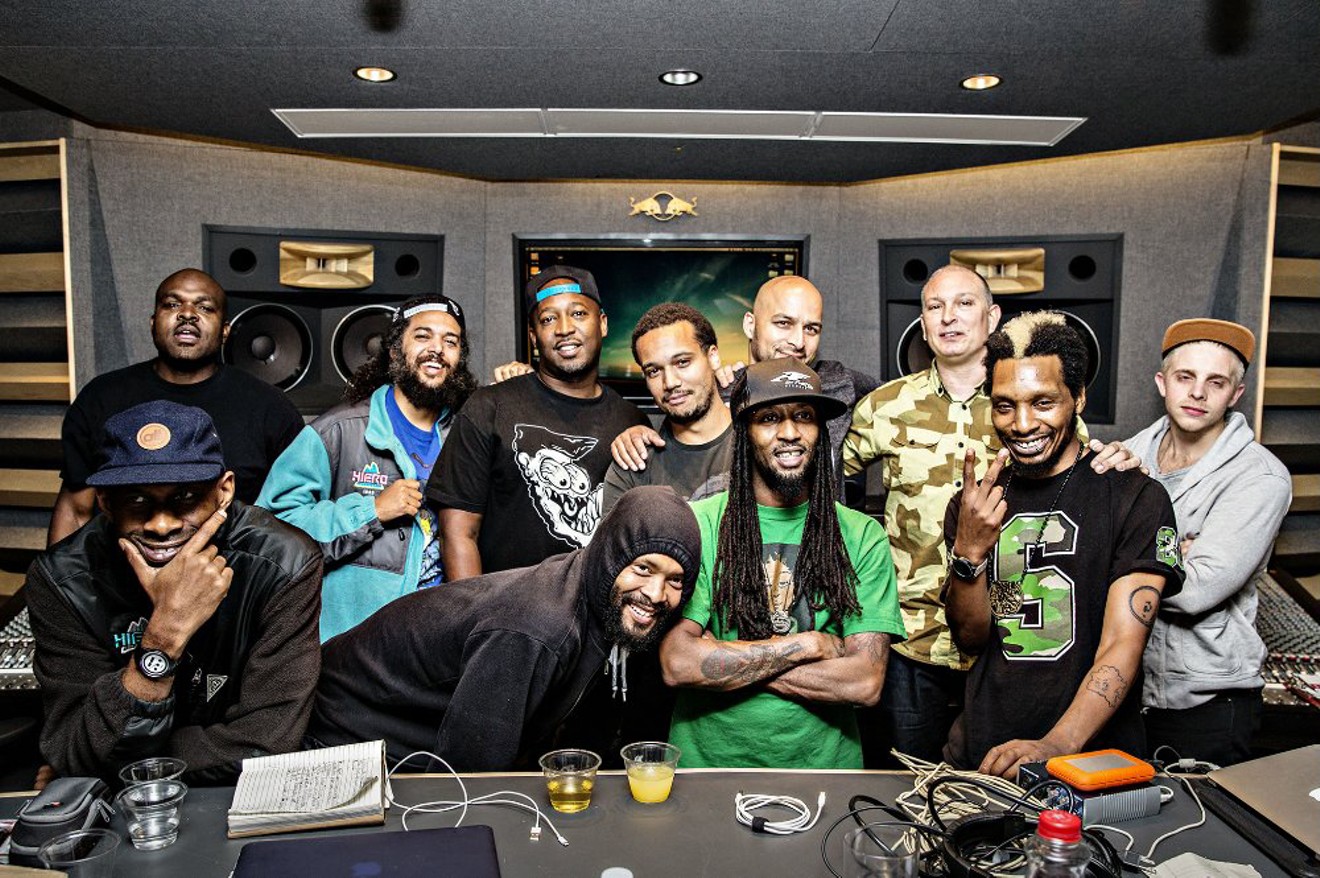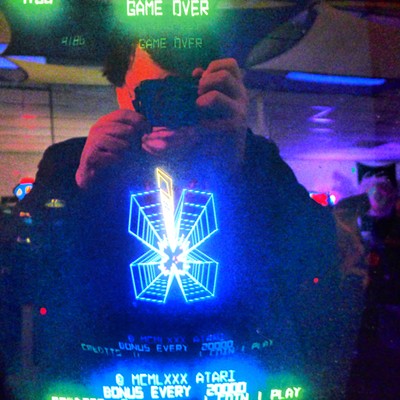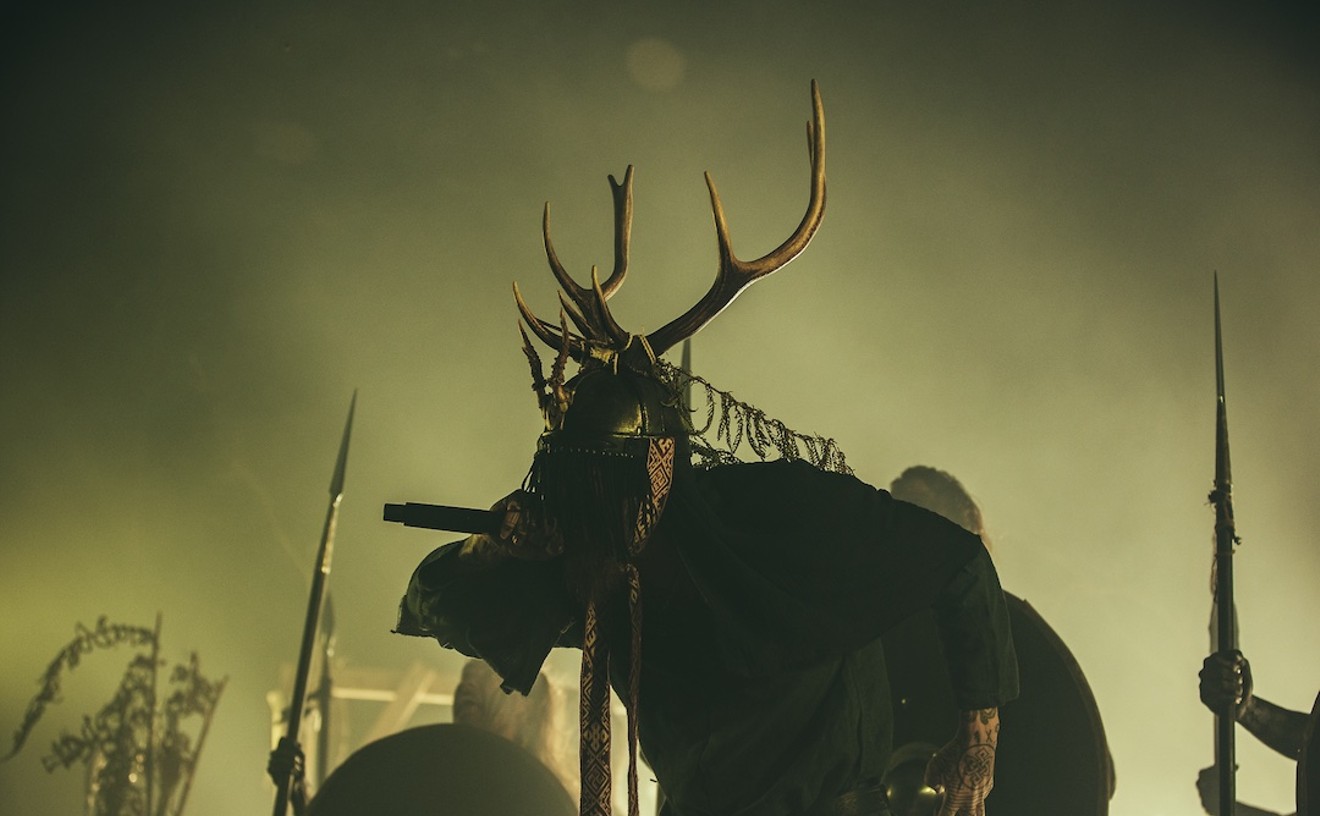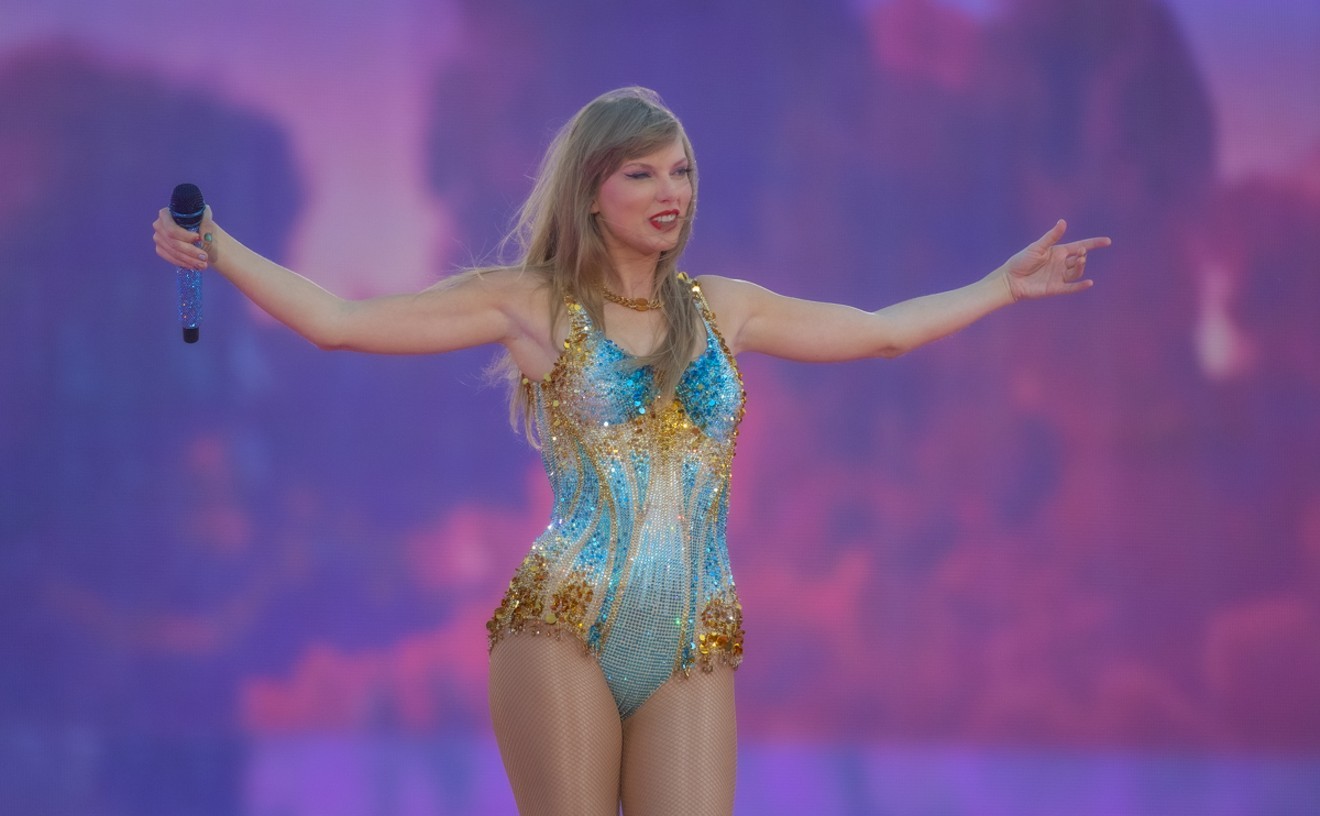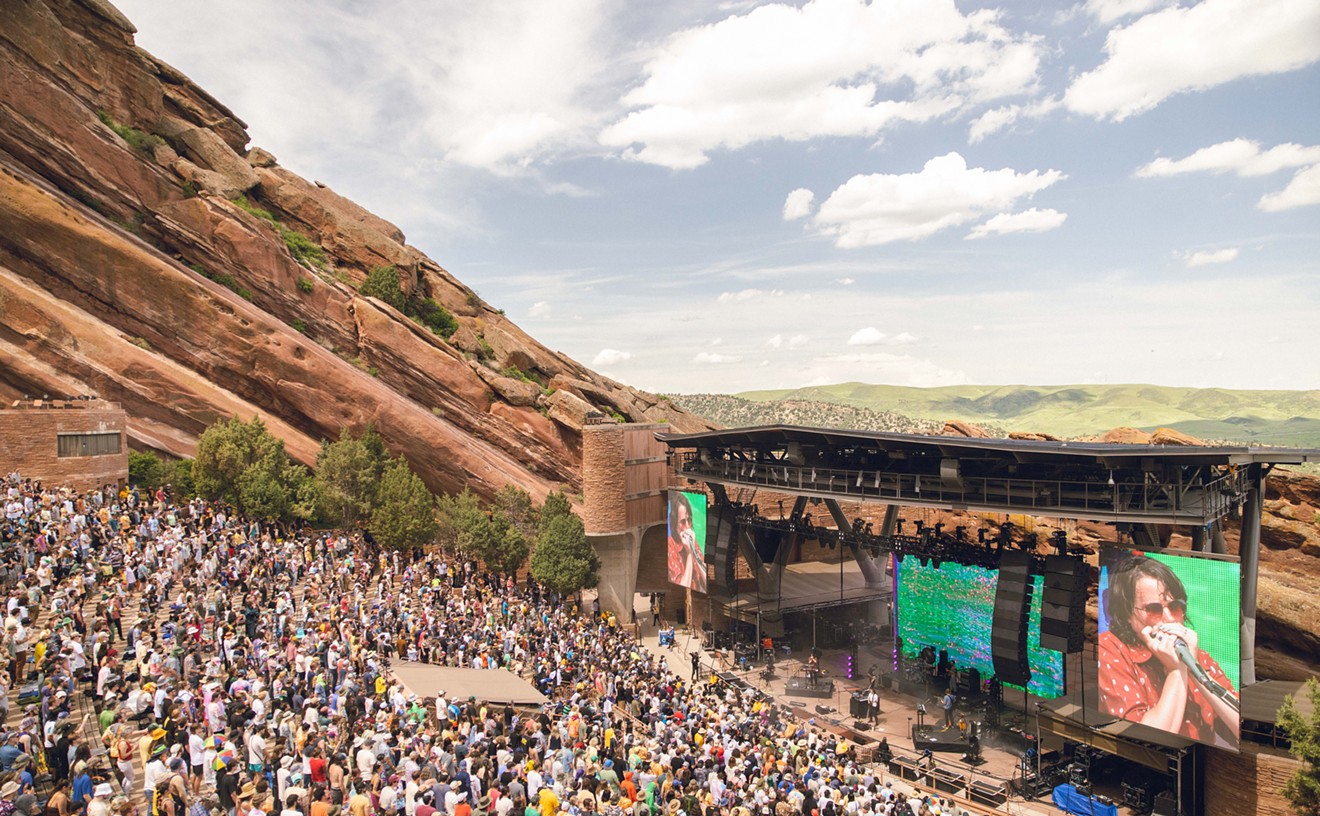The members of the influential hip-hop crew Hieroglyphics grew up within walking distance of each other in Oakland. They steeped their psyches in the city’s diverse cultural offerings and cultivated their instinct for originality on their own terms.
Hieroglyphics may not have experienced massive commercial success over the years, but its members have remained steeped in that early creative idealism.The collective, founded in 1991, is currently on tour with its original lineup: Del the Funky Homosapien, Casual, Pep Love, Domino, DJ Toure, Phesto, A-Plus, Opio and Tajai — the last four of whom make up the rap group Souls of Mischief.
We recently spoke with Opio about how the musicians’ formative years and collective willingness to refine ideas led to Hieroglyphics’ original sound.
Westword: Because of your roots in jazz, you were probably compared early on to groups like A Tribe Called Quest and the Roots.
Opio: We loved A Tribe Called Quest and De La Soul and all those groups — they were definitely influential on us. But we thought it would be disrespectful to them to take any elements of what they were doing and put that into our own music. We were using jazz and they were using jazz, but we had a totally different rhythm pattern and a totally different swing to what they were doing. Souls of Mischief’s first big tour was with De La Soul and A Tribe Called Quest [in 1993]. We were actually able to show people that came to a concert that there was a stark difference between us. It was an honor, because we were huge fans. But we didn’t want to sound like them.
Some people might be surprised to learn that when you were growing up, being a rapper wasn’t a popular activity or much respected.
Even my closest friends would be critical about what I was doing, because if I was going to do it, I would have to do it at a super-high level. So it was a small community of people into hip-hop, and people could be dismissive of you.
That type of close-knit community, I think, drove us and our peers [because] of how people would look at what you’re doing and break it down. If any little bit of your sound was similar to anybody else, people would see it immediately.
We were critical and competitive in our own group, as well: “So-and-so used that same word in another rap, so don’t use that word.” We would go that far. Vocabulary for us was a huge thing. Sometimes as an MC, you see people rapping and you almost know what the next word is going to be when they say the rhyming word. With some of the elite MCs, you don’t rhyme the word you automatically think is coming next. That’s one of the things we challenged ourselves with [that] helped us to craft that original sound.
Beyond growing up together, Hieroglyphics became close because you were a subset of a subculture in a way that challenged itself.
It was such a small community of people that were super-passionate about hip-hop. And within that small community, there was an even smaller community of people that were actually rapping. And within that were a small group of people that were any good. By the time of our first years of high school, our passion separated us from our peers, and we couldn’t relate to anyone else. We lived, breathed, ate and slept hip-hop.
Me and Casual, we had our favorite rappers at the time. They weren’t the most celebrated artists ever, but I was a big X Clan fan, and I thought that Brother J was an amazing MC. Casual thought that Lord Finesse was this incredible MC. And they both were equally, so for us, we would go back and forth about who was better.
We couldn’t have those conversations with too many people. You needed people that shared that passion and had the skill level and sophistication. We had to have those kinds of philosophical conversations.
We did our demo tapes and this and that, and it spread us around, and that helped to inspire other people in our area and in our generation. We were in our own world, not knowing we were having this influence on other people.
Before even recording with each other, we had a shared worldview that was like, “I’ve been looking for you my whole life without even knowing it” — and now we’re linked forever.
Hieroglyphics
8 p.m. Saturday, February 25, Cervantes’ Masterpiece Ballroom, $28-$32, 16+, 303-297-1772.
[
{
"name": "Air - MediumRectangle - Inline Content - Mobile Display Size",
"component": "12017618",
"insertPoint": "2",
"requiredCountToDisplay": "2"
},{
"name": "Editor Picks",
"component": "17242653",
"insertPoint": "4",
"requiredCountToDisplay": "1"
},{
"name": "Inline Links",
"component": "18838239",
"insertPoint": "8th",
"startingPoint": 8,
"requiredCountToDisplay": "7",
"maxInsertions": 25
},{
"name": "Air - MediumRectangle - Combo - Inline Content",
"component": "17261320",
"insertPoint": "8th",
"startingPoint": 8,
"requiredCountToDisplay": "7",
"maxInsertions": 25
},{
"name": "Inline Links",
"component": "18838239",
"insertPoint": "8th",
"startingPoint": 12,
"requiredCountToDisplay": "11",
"maxInsertions": 25
},{
"name": "Air - Leaderboard Tower - Combo - Inline Content",
"component": "17261321",
"insertPoint": "8th",
"startingPoint": 12,
"requiredCountToDisplay": "11",
"maxInsertions": 25
}
]

